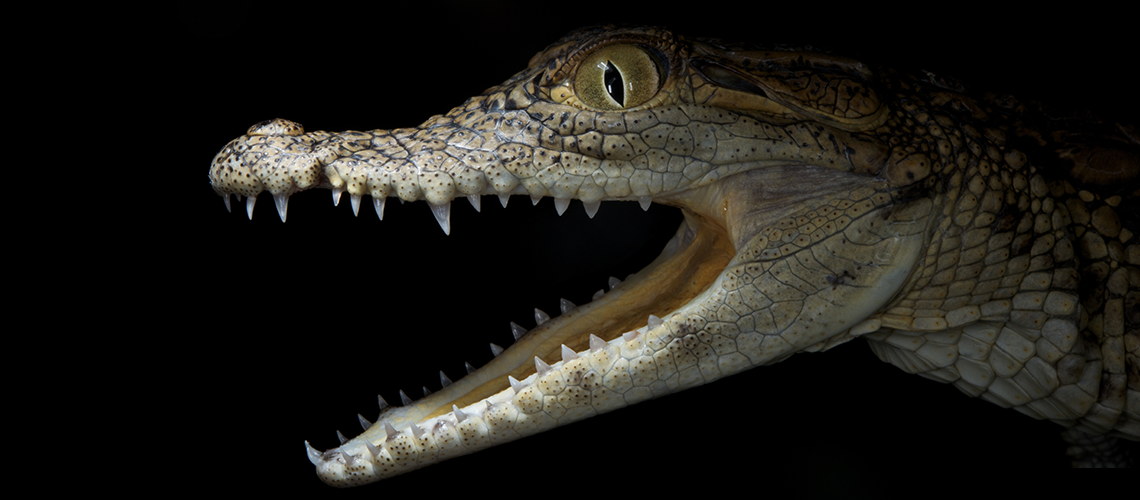Follow us on Google News (click on ☆)

The diversity of scales on the snout and jaws of different crocodilian species stems from the evolution of mechanical parameters.
© Michel Milinkovitch — University of Geneva, Switzerland
How can we explain the morphological diversity of species? While genetics is the answer that comes most readily to mind, it is not the only explanation. By combining observations of embryonic development, advanced microscopy techniques, and computer modeling, a multidisciplinary team from the University of Geneva (UNIGE) demonstrates that the development of crocodile head scales results from a process related to the mechanics of growing tissues, rather than molecular genetics.
The diversity of these scales, observed in different crocodilian species, thus stems from the evolution of mechanical parameters. These results provide new insights into the physical forces involved in the development and evolution of the diversity of life forms. They could apply to other complex biological systems. This research is published in the journal Nature.
The origin of the diversity and morphological complexity of living beings remains one of the greatest mysteries of science. To unravel it, scientists study various biological species. The laboratory of Michel Milinkovitch, a professor in the Department of Genetics and Evolution at the Faculty of Science at UNIGE, studies the development and evolution of vertebrate integumentary appendages—that is, feathers, hair, and scales—to understand the fundamental mechanisms responsible for this diversity. It is generally considered that the embryonic development of these appendages is dictated by genetic processes involving interactions between many molecules resulting from gene expression.
Like a "crack" propagating
However, analyses of crocodile embryo development conducted previously by the Geneva laboratory showed that, unlike those on the body, the scales covering the snout and jaws arise from a process reminiscent of crack propagation within a material under mechanical stress. The exact nature of this physical process, however, remained unknown.
The UNIGE team solved this mystery through new highly multidisciplinary work. They first observed the appearance of scales during the development of the Nile crocodile embryo, which lasts about 90 days. While on the 48th day, the skin covering the jaws and snout is still smooth, skin folds appear by the 51st day and then propagate and interconnect to form polygonal scales of two types: large and elongated on the top of the snout, smaller and more irregular on the sides of the jaws.
Michel Milinkovitch's group wanted to know if differences in growth rates between the epidermis, dermis, and underlying skull bones could explain the appearance of folds, and thus scales. To achieve this, they developed a technique for injecting a hormone into the crocodile egg that activates the growth and stiffening of the epidermis—the Epidermal Growth Factor (EGF). They then discovered that activating growth and increasing the stiffness of the superficial skin layer leads to a dramatic change in the organization of skin folds.
"We observe that the skin first folds abnormally and forms a labyrinthine network resembling brain folds, but eventually forms much smaller scales like those of caimans," explain Gabriel Santos-Durán and Rory Cooper, postdoctoral researchers in Michel Milinkovitch's laboratory and co-authors of the study. These observations show that variation in the growth rate and stiffening of skin layers is a simple evolutionary mechanism capable of generating a great diversity of scale shapes among different crocodilian species.
A 3D model of jaw development
The scientists then used advanced microscopy techniques, called "light-sheet fluorescence microscopy," to quantify the growth rate and thickness variation of different tissues (epidermis, dermis, bone tissue) across the embryo's head, as well as the organization of collagen fibers in the dermis. The Geneva team used this data to build a three-dimensional (3D) computer model that allows for varying the growth rate and stiffness of tissues.
"By exploring these different parameters, we can generate the different scale shapes corresponding to treated and untreated Nile crocodiles with EGF, as well as the spectacled caiman or the American alligator. These computer simulations demonstrate that tissue mechanics can easily explain the diversity of shapes of certain anatomical structures in different species, without involving molecular genetic factors," concludes Ebrahim Jahanbakhsh, a computer engineer in Michel Milinkovitch's laboratory and co-author of the study.